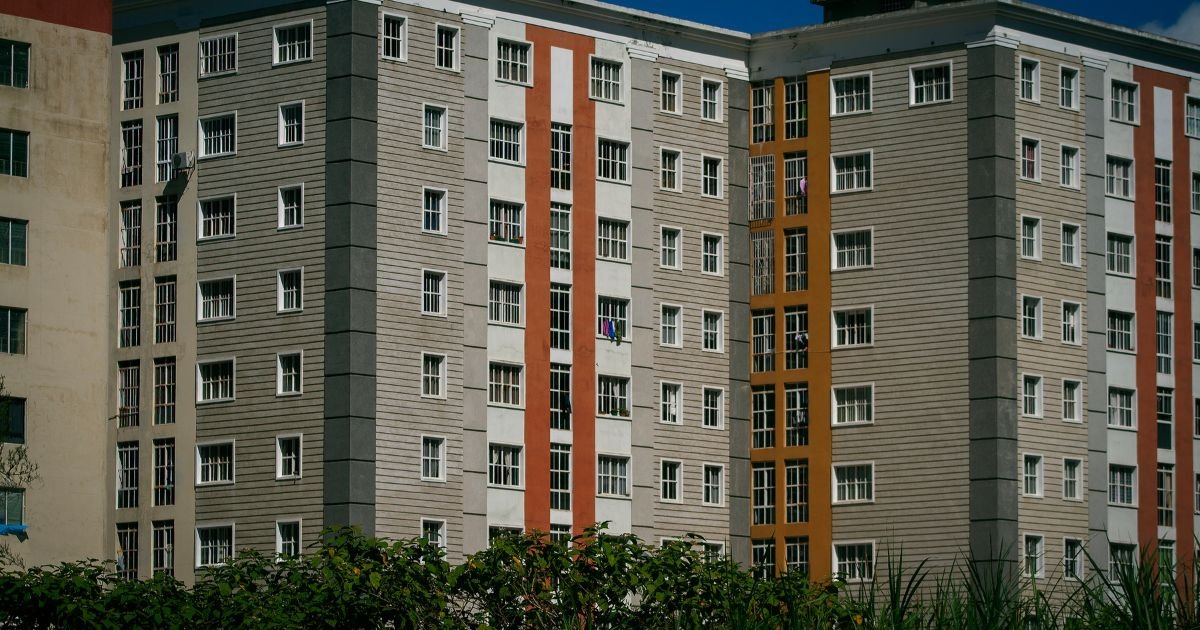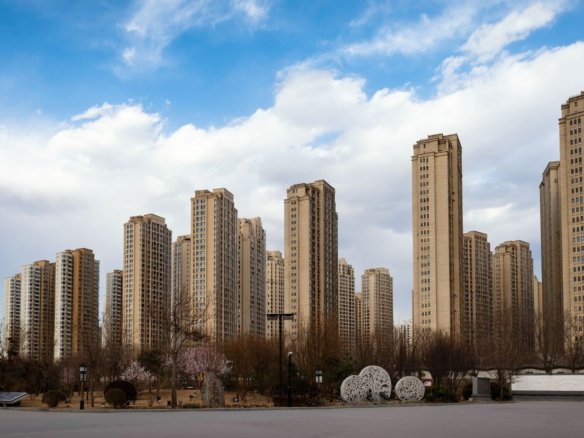With real estate prices climbing steadily across urban centers, the dream of owning a home often feels out of reach for many families. Recognizing this challenge, the Government of Haryana has launched a series of initiatives aimed at making housing more accessible and affordable for a broader segment of society.
One of the most impactful programs under this initiative is implemented through the Housing Board Haryana (HBH). The Board has been actively working to bridge the housing gap by offering well-constructed, budget-friendly residential flats and plots to eligible beneficiaries. The focus is on ensuring that people from all walks of life—especially the Economically Weaker Sections (EWS), Low-Income Groups (LIG), Middle-Income Groups (MIG), and even Higher-Income Groups (HIG)—can find a suitable housing solution.
The scheme is not just about affordability; it’s also about urban inclusivity and regional balance. By strategically launching housing projects in rapidly growing and well-connected cities like Gurugram (Gurgaon), Panchkula, Faridabad, Karnal, and Rohtak, the government is creating new opportunities for homeownership in areas that offer robust infrastructure, employment options, and a higher quality of life.
Among these, Gurgaon stands out as a prime destination due to its booming economy, expanding metro connectivity, and proximity to Delhi. Affordable housing projects in this region provide a rare chance for individuals and families to live in a premium urban environment without the burden of high market rates.
Through a combination of subsidized rates, transparent allotment methods, and flexible payment options, the scheme ensures that owning a home in a major city is no longer a distant dream but an achievable goal for thousands of citizens.
🏠 Scheme Highlights
The Affordable Housing Scheme by the Housing Board Haryana (HBH) offers a wide range of benefits to eligible homebuyers, especially those who have traditionally been priced out of the private real estate market. Here’s a closer look at what makes this scheme a transformative initiative for housing in Haryana:
🏡 Affordable Pricing Well Below Market Rates
One of the most attractive features of the scheme is the government-subsidized pricing. Homes and plots are offered at rates significantly lower than the prevailing market prices, making it easier for low- and middle-income families to step into homeownership. This initiative drastically reduces the financial burden on first-time buyers and provides access to homes in prime urban locations that would otherwise be unaffordable.
👨👩👧👦 Targeted Beneficiaries Across Income Groups
The scheme is designed to be inclusive, catering to a broad spectrum of society. The primary target groups include:
Below Poverty Line (BPL)
Economically Weaker Section (EWS)
Low Income Group (LIG)
Middle Income Group (MIG)
High Income Group (HIG)
This comprehensive approach ensures that no segment is left behind and that everyone—from daily wage earners to salaried employees—has a fair opportunity to own a home.
🏗️ Proven Track Record of Housing Delivery
Since its establishment in 1971, Housing Board Haryana has constructed over 95,000 homes, with a remarkable 75% of them allocated to BPL, EWS, and LIG families. This long-standing commitment reflects the Board’s focused mission to uplift economically weaker sections and promote social equity through homeownership.
🎟️ Transparent Allotment Process via Draw or E-Auction
The scheme ensures complete transparency in allotment:
For standard schemes, houses and flats are allotted through a lottery-based draw system, eliminating bias and ensuring fairness.
For buyers looking for more flexibility or immediate availability, a new e-Auction option has been introduced. This allows potential homeowners to participate in online bidding for unsold or premium-category properties in real-time via the HBH e-auction portal.
Both systems are managed digitally, ensuring transparency, traceability, and zero manual interference.
🌳 Well-Planned Townships with Modern Amenities
The homes under this scheme are not just affordable—they are part of well-planned, sustainable residential communities. Key features include:
Lush green parks for children and families
Community halls and centers for gatherings and events
Proper roads, street lighting, and drainage systems
Proximity to schools, hospitals, and public transport
Eco-friendly infrastructure designed to promote healthy, sustainable living
These amenities elevate the quality of life and provide a safe and welcoming environment for residents, aligning with modern urban lifestyle expectations.
🎯 Who Is Eligible?
The Affordable Housing Scheme by the Housing Board Haryana is designed with specific eligibility criteria to ensure that housing is allotted to individuals and families who genuinely require affordable homes. The eligibility is divided into two main parts: General Requirements and Income-Based Eligibility.
✅ General Requirements
1. Indian Citizen
Only those individuals who hold Indian citizenship are eligible to apply for this scheme. This ensures that the housing benefits are reserved exclusively for citizens of India.
2. Must Be 18 Years or Older at the Time of Registration
The applicant must have reached the legal age of adulthood, which is 18 years. This condition ensures that minors or underage individuals are not eligible to apply.
3. No Existing Residential Property in Specific Areas
Neither the applicant nor any of their dependent family members—such as spouse or unmarried children—should own any residential property in Haryana, Delhi, or Chandigarh. This condition is meant to prioritize those who do not already own a home in the specified regions.
4. Only One Application per Family
Only one person per family is allowed to apply for the housing scheme. For the purpose of this scheme, a family includes the applicant, their spouse, and any unmarried minor children. This rule prevents multiple applications from the same household, promoting fairness and broader outreach.
✅ Income-Based Eligibility
The scheme classifies applicants based on their annual family income, which includes the earnings of the applicant, their spouse, unmarried children, and any financially dependent family members. This classification helps the government in identifying and prioritizing the applicants based on their financial capacity.
Economically Weaker Section (EWS): This category includes families whose annual household income does not exceed ₹1,00,000.
Low Income Group (LIG): Families with an annual income ranging from ₹1,00,001 to ₹2,00,000 fall under this category.
Middle Income Group (MIG): This includes those families whose total annual income lies between ₹2,00,001 and ₹4,50,000.
High Income Group (HIG): Families earning more than ₹4,50,000 annually are categorized under HIG. While they are eligible, the primary focus of the scheme remains on lower-income categories.
Note: Family income includes all sources of income such as salary, business income, allowances, and other financial gains earned by any family member who is financially dependent on the head of the family.
🧾 Allotment Process
The Housing Board Haryana (HBH) offers two ways to allot affordable housing units to eligible applicants:
Through a traditional registration and draw system
Through an online e-Auction system
Both processes are designed to maintain transparency, fairness, and convenience for homebuyers.
📝 Via Registration and Draw System
This is the conventional method where applicants submit their interest through an online portal and homes are allotted through a lottery (draw of lots). Here’s how it works:
1. Online Application on hbh.gov.in
Eligible applicants must visit the official website of the Housing Board Haryana (https://hbh.gov.in) to fill out the application form for the specific housing scheme and city, such as Gurgaon.
2. Uploading Required Documents
Applicants need to upload the following documents during registration:
Aadhar Card
PAN Card
Proof of Income (Income certificate or salary documents)
Proof of Residence (Utility bills, domicile certificate, etc.)
These documents are used to verify eligibility based on income group, residential status, and identity.
3. Payment of Earnest Money
A payment of 10% of the total cost of the house or flat (advertised value) must be made at the time of application. This is called Earnest Money and is mandatory for registration.
4. Draw of Lots
After the application window closes, the HBH scrutinizes all valid entries and conducts a draw of lots within six months of the closing date. The list of selected applicants is made public on the HBH website and through newspaper notifications.
5. Issue of Demand Notice
Applicants selected in the draw receive a Demand Notice, which instructs them to pay the next installment toward the property cost.
6. Allotment and Possession
After paying the required amount, applicants are issued an Allotment Letter. They must take possession of the property within 30 days from the date of allotment.
⚠️ Important: If the applicant fails to take possession within 30 days, 50% of the paid amount is forfeited, and the balance is refunded without interest.
🛒 Via E-Auction (New Option)
HBH has introduced a modern, transparent method for property allotment through an online e-Auction system, which allows buyers to participate in bidding for available properties.
🔗 Participation Portal
Interested buyers must register through the official e-auction platform:
🧾 Steps to Participate in E-Auction
1. Registration on the Portal
Create an account on the e-auction website to receive a user ID and password. This allows you to access available properties and participate in auctions.
2. Deposit Earnest Money (EMD)
You must deposit 10% of the property’s reserve price as Earnest Money Deposit (EMD). This payment can be made through:
NEFT
RTGS
Net Banking
Challan Generation (for offline banking)
Each property you bid on requires a separate EMD deposit.
3. Upload Documents Based on Bidder Type
Depending on who is applying, the following documents are required:
Individual Bidder:
Aadhar Card
PAN Card
Passport-size photograph
Joint Bidder:
Aadhar and PAN cards of all applicants
Firm/Company:
Memorandum & Articles of Association
Board Resolution or Authorization
Partnership Deed (if applicable)
4. Bidding Process
Bidding starts at 10:00 AM on scheduled dates.
If bids come in near the end of the bidding period, the auction automatically extends in 5-minute intervals to allow fair competition.
Auctions may continue until no further bids are placed in the final minute of any extension period.
5. Declaration of Highest Bidder
The highest bidder (H1) is declared the winner after document verification and approval from HBH. A Letter of Intent (LOI) is issued to the successful bidder.
6. Payment of Remaining Amount
After receiving the LOI:
25% of the bid amount (adjusted against EMD) must be paid within 30 days.
The remaining 75% must be paid either:
Within 100 days (without interest), or
In 6 half-yearly installments with 10% annual interest.
7. Allotment Letter and Possession
Once 25% of the amount is received, an Allotment Letter is issued. The physical possession of the property is handed over within 30 days from the date of the allotment letter.
💳 Accepted Payment Methods for EMD and Installments
Debit/Credit Cards
Net Banking
RTGS/NEFT (with auto-validated challan generated through the portal)
All payments must be made through the official e-auction portal or its integrated banking partners. Successful transactions generate a receipt which can be printed for reference.
📍 Gurgaon: A Hotspot Under the Scheme
Why Choose Gurgaon?
Gurgaon, now known as Gurugram, has emerged as one of the most sought-after cities in India, particularly under the Haryana Building Code (HBH) scheme, which aims to enhance its infrastructure and residential developments. Here are some compelling reasons why investing in Gurgaon is a wise choice:
1. Rapidly Growing IT and Commercial Hub
Gurgaon has quickly transformed into a leading IT and commercial destination, earning it the reputation of being the “Millennium City.” Numerous multinational companies, IT giants, and Fortune 500 firms have set up their offices in Gurgaon, making it one of the most attractive business hubs in India. The city offers abundant employment opportunities, making it a prime location for professionals, entrepreneurs, and business owners. This economic growth ensures a stable demand for both residential and commercial properties, boosting the real estate market.
2. Excellent Metro and Road Connectivity
One of Gurgaon’s key advantages is its outstanding connectivity. The city is well-served by the Delhi Metro, offering easy and fast access to central Delhi and other parts of NCR (National Capital Region). The metro network, along with wide, well-maintained roads and expressways like the Delhi-Gurgaon Expressway and the upcoming Dwarka Expressway, ensures smooth travel within and beyond the city. With the city’s connectivity improving further with planned infrastructural projects, commuting and connectivity are only going to get better.
3. Access to Healthcare, Schools, and Shopping Centers
Gurgaon is home to some of the best healthcare facilities in India, with world-class hospitals like Medanta, Artemis, and Fortis. For families and professionals, this accessibility to top-notch healthcare is a major draw. Additionally, Gurgaon boasts a range of prestigious schools, both international and CBSE-affiliated, making it a great place for families. The city is also home to some of the best shopping malls, including Ambience Mall and DLF Mall of India, providing residents with easy access to retail stores, entertainment, and dining options.
4. High Resale and Rental Value Potential
The real estate market in Gurgaon has shown consistent growth over the years, with high resale and rental value potential. Due to the city’s booming IT and commercial sectors, there is a constant demand for residential properties, both for purchase and rent. This demand, combined with planned residential developments under the HBH scheme, ensures that properties in Gurgaon offer strong investment opportunities with excellent returns. Whether you’re looking for a place to stay or a profitable real estate investment, Gurgaon presents an attractive option.
5. Residential Projects Under HBH
The Haryana Building Code (HBH) scheme offers meticulously planned residential zones with modern amenities that cater to various needs and budgets. In these well-planned residential areas, you can find apartments ranging from 1BHK to 3BHK, designed to meet the demands of contemporary living. These projects come with essential amenities such as 24/7 security, well-equipped gyms, swimming pools, parks, and easy access to schools, hospitals, and shopping centers, ensuring a comfortable and convenient lifestyle for residents.
Gurgaon’s strategic location, modern infrastructure, and promising real estate market make it an attractive destination for homebuyers and investors alike. Whether you’re looking for a home to settle in or a property to invest in, Gurgaon offers great opportunities in both cases.
💳 Payment Terms for Allottees
The payment terms for allottees under the hire purchase scheme for residential properties are structured across different stages of the project, providing flexibility for EWS (Economically Weaker Section), LIG (Lower Income Group), MIG (Middle Income Group), and HIG (Higher Income Group) buyers. Here’s a detailed breakdown of the payment schedule:
Stage-wise Payment Structure
1. Application Stage
EWS (Economically Weaker Section):
At the application stage, allottees from the EWS category are required to pay an upfront amount of 10% of the total property cost. This is a relatively low initial investment, making homeownership accessible to lower-income groups.LIG/MIG/HIG (Lower, Middle, and Higher Income Groups):
Allottees from LIG, MIG, and HIG categories are also required to pay 10% of the property cost at the application stage. This payment is standard across these categories, reflecting an initial commitment towards the property.
2. After the Draw
EWS (Economically Weaker Section):
After the lottery draw, EWS allottees are required to pay 20% of the total cost of the property, adjusted for any amount already paid. For instance, if the application payment was made, the balance will be calculated as 20% minus the 10% already paid.LIG/MIG/HIG (Lower, Middle, and Higher Income Groups):
For LIG, MIG, and HIG allottees, the payment required after the draw is 25% of the total property cost, adjusted for any prior payments made. This ensures that buyers contribute significantly to the property cost before the allotment.
3. At Allotment/ Possession Stage
EWS (Economically Weaker Section):
Upon allotment or possession, EWS allottees must pay a minimum of 50% of the total property cost. This is the largest single payment in the schedule, ensuring that the property development is adequately funded by this stage.LIG/MIG/HIG (Lower, Middle, and Higher Income Groups):
For LIG, MIG, and HIG allottees, the payment due at the allotment or possession stage is capped at 40% of the total property cost. This allows buyers in these categories to manage their finances with a lower burden at the time of possession.
4. Remaining Balance
For Both EWS and LIG/MIG/HIG (All Categories):
The remaining balance of the property cost after the possession stage is payable in the form of EMI (Equated Monthly Installments) over a period of 10 years. This offers flexibility to allottees in paying off the remaining dues at a manageable pace. The EMI structure ensures that the financial burden is spread over an extended period, making it easier for homebuyers to fulfill their financial commitments without significant strain.
Summary of Payment Terms
| Stage | EWS | LIG/MIG/HIG |
|---|---|---|
| Application | 10% of total cost | 10% of total cost |
| After Draw | 20% (less already paid) | 25% (less already paid) |
| At Allotment/Possession | 50% (min) | 40% (max) |
| Remaining Balance | EMI over 10 years | EMI over 10 years |
These payment terms aim to provide financial flexibility for allottees across different income categories, enabling a diverse range of buyers to participate in property ownership without facing an overwhelming upfront cost. The staggered payments, along with the option of EMI, make the home buying process more accessible and manageable for everyone.
📞 Support & Contact
Helpline: 9119119605 (Mon–Sat, 9:00 AM–6:30 PM)
Head Office: Awas Bhawan, Plot No. C-15, Sector-6, Panchkula
🏁 Conclusion: Your Path to Affordable Living Starts Here
The Haryana Housing Scheme presents an incredible opportunity for individuals looking to secure an affordable, government-backed home in one of India’s most rapidly developing cities—Gurgaon. Whether you’re applying through the traditional draw system or opting for the innovative e-auction platform, this scheme provides a straightforward path to homeownership with all the benefits of modern infrastructure and a strategic location.
Gurgaon, known for its thriving business environment, excellent connectivity, and world-class amenities, is the ideal place for those seeking both a place to live and a sound investment in their future. The Haryana Housing Scheme ensures that homeownership is within reach for a wide spectrum of buyers, offering flexible payment terms that cater to both economically weaker sections (EWS) and middle-to-high-income groups (LIG, MIG, HIG).
The eligibility norms are clearly defined, making the application process transparent and accessible. With a structured, easy-to-follow payment plan, including a manageable EMI option spread over ten years, owning a home in Gurgaon has never been more feasible. This scheme eliminates the complexities typically associated with property purchases, allowing buyers to focus on the excitement of securing their future.
Now is the perfect time to make your move into homeownership. Take the first step toward your dream home by applying for the scheme or registering for the e-auction. Don’t miss out on this unparalleled opportunity to own a premium property in a city that promises immense growth and prosperity. Secure your spot today, and unlock the door to a brighter, more stable future for you and your family.





Join The Discussion